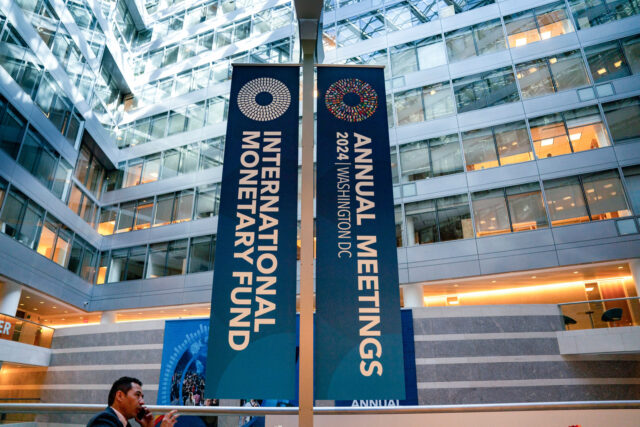The International Monetary Fund (IMF) announced that while it believes the global fight against inflation is nearing completion, significant risks remain due to high debt levels in many countries.
Despite these challenges, the United States is emerging as a clear leader among advanced economies, driven by robust investment and productivity gains.
In its latest World Economic Outlook released Tuesday, the IMF projected that global inflation will fall to 3.5 percent by the end of 2025, a significant decrease from the 9.4 percent peak seen in 2022. This positive trend is largely attributed to effective monetary policies implemented by central banks, which have managed to raise interest rates without pushing economies into recession.
However, skepticism lingers regarding the IMF’s initial forecasts. In the 2021 Outlook, the IMF projected that “headline inflation will likely return to pre-pandemic levels by mid-2022.” This prediction proved to be overly optimistic, as inflation surged instead, highlighting the complexities of the economic landscape.
The report’s attribution of declining inflation primarily to central banks’ actions rather than fiscal policies from the Biden-Harris administration offers little comfort for Vice President Kamala Harris’s campaign. Polls show that voters are extremely unhappy with the U.S. economy under the Biden-Harris administration and trust former president Donald Trump to better steward the economy and bring down inflation.
U.S. Outpaces Global Growth
The U.S. economy is forecasted to expand by 2.5 percent in the fourth quarter of this year, an increase from previous estimates. This surge is fueled by strong consumer spending and a marked increase in nonresidential investment, particularly in infrastructure and green energy sectors.
Investment spending in the U.S. is projected to rise by 4.5 percent this year, significantly outpacing other advanced economies, where investment growth is stagnating or even declining. This boom in capital formation is expected to continue, with the IMF forecasting U.S. growth at 1.9 percent in 2025 compared to just 1.7 percent for other advanced nations.
Energy Independence Shields U.S. from Shocks
One key factor in the U.S. economic resilience is its energy independence. Thanks to advancements in extraction technologies, such as fracking, the U.S. has insulated itself from global energy price shocks that have plagued Europe and other regions. This energy abundance has contributed to stable prices domestically, allowing American businesses to focus on productivity improvements rather than managing high energy costs.
In contrast, European firms continue to face elevated energy expenses, paying significantly more for electricity and gas than their U.S. counterparts. This disparity underscores the challenges facing the eurozone, where growth is projected to remain sluggish, at just 1.2 percent this year.
Geopolitical Tensions and Long-Term Risks
Despite the encouraging outlook for inflation and growth, the IMF cautioned that geopolitical risks loom large. Ongoing conflicts in the Middle East and the war in Ukraine could reignite inflation by driving up food and energy prices. Not surprisingly, the I.M.F. also treats the possibility of tariffs under a Trump administration as adding another layer of uncertainty to the global economic landscape. Donald Trump, however, has stressed that he expects his tariffs to result in freer trade and lower trade barriers globally rather than a trade war.
A significant concern highlighted by the IMF is the risk posed by high debt levels across many countries. As nations grapple with the aftermath of pandemic-related spending, the burden of debt could limit their ability to respond effectively to future economic challenges, hampering growth and recovery efforts.
Challenges for Other Economies
The report also highlights the divergent paths of major global economies. While the U.S. leads with solid growth and productivity gains, countries like China are facing significant challenges. The Chinese economy is expected to grow at a slower pace of 4.5 percent this year, impacted by a troubled housing market and declining consumer confidence.
Moreover, advanced economies are grappling with high debt levels and sluggish growth. The IMF’s projections indicate that overall growth for wealthy nations will hover around 1.9 percent this year, reflecting the challenges many countries face as they emerge from the pandemic’s economic disruptions.
A Cautious Outlook
As the world enters the final stages of the inflation fight, the IMF’s message is clear: while significant progress has been made, new threats are on the horizon. The future of global economic stability depends on careful policymaking and a keen eye on rising geopolitical tensions and high debt levels, which could disrupt the hard-won gains achieved over the past years.

COMMENTS
Please let us know if you're having issues with commenting.